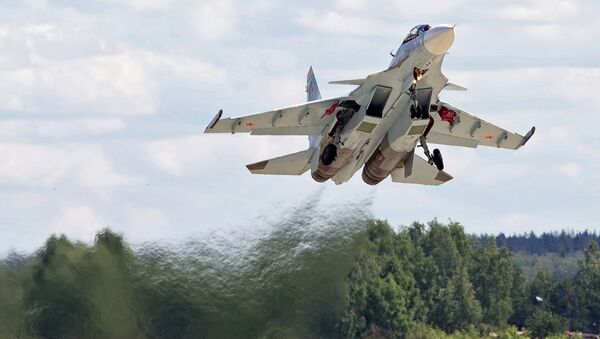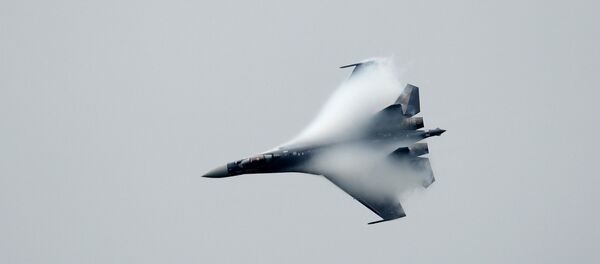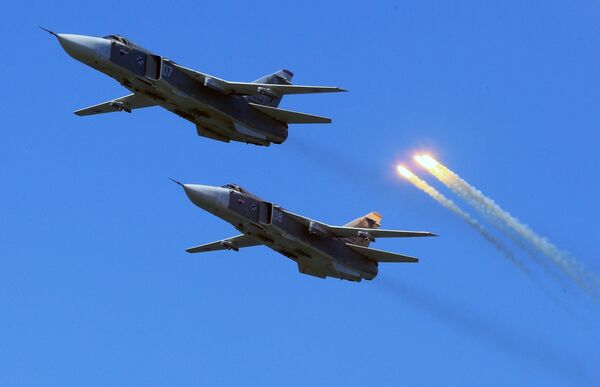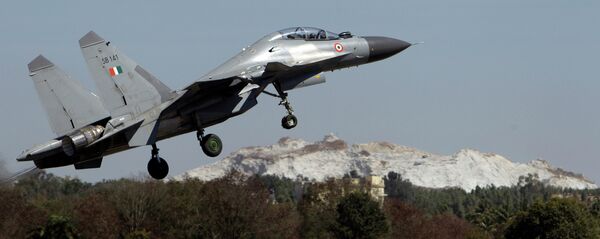According to experts, the plane's combat and flight characteristics are even superior to those of the US-made F-22 Raptor, touted as a fifth generation fighter.
The Su-30SM is a modernized version of the Su-30 fighter that was created by the Sukhoi Design Bureau in the early 1990s. The aircraft performed its maiden flight in September 2012.
The plane's high degree of maneuverability and unique takeoff and landing characteristics can be explained by its integrated aerodynamic configuration, combined with its thrust vectoring control ability. In terms of the aerodynamic efficiency, the Su-30SM has no rivals.
The Su-30SM is equipped with a digital fly-by-wire system, which enables the aircraft to perform some of the most advanced aerobatic maneuvers attempted by fighter jets, including the Pugachev's Cobra and the tailslide.
During the Pugachev Cobra maneuver, an airplane flying at a moderate speed suddenly raises the nose momentarily to the vertical position and slightly beyond, before dropping it back to normal flight. As for the tailslide, it is an aerobatic maneuver in which an aircraft that has been pulled into a steep climb stalls and then loses altitude by dropping backward.
These manoeuvers quickly decelerate the aircraft, causing a pursuing fighter to overshoot, as well as breaking a Doppler radar-lock, as the relative speed of the aircraft drops below the threshold where the signal registers to the radar.
With a normal fuel reserve of 5,270 kilograms, the Su-30SM is capable of performing a 4.5-hour combat mission with a range of 3,000 kilometers. An aerial refueling system increases the range to 5,200 kilometers or flight duration up to ten hours at cruise altitudes. The plane's maximum speed stands at 2,120 kilometers per hour.
The Su-30SM features friend-or-foe identification equipment, ejection seats as well as global positioning and inertial navigation systems. The aircraft's sophisticated design allows the integration of modern avionics, including a new radar system, radio and recognition system, as well as other support systems.
The Russian Armed Forces received the first eighteen Su-30SMs between 2012 and 2014, amid plans by the country's Defense Ministry to gradually replace the Su-24 fleet with Su-30SM fighters.
The Su-24 is a supersonic, all-weather attack aircraft with variable-sweep wings. The plane was developed in the Soviet Union and is currently in service with the Russian Black Sea Fleet.






